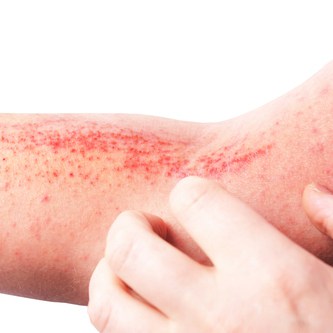Because of the intricacy and vast amount of knowledge needed to provide professional care, the practice of specialized medicine for skin health continues to grow. Where does the art of dermatology fit in?
The average adult human has anywhere between 22 and 24 square feet of skin. Taken as a whole, the skin is one of the body’s largest organ, and accounts for a significant part of the total body weight. Over 3,200 diseases and disorders affect the skin, both chronic and acute. In addition, many conditions show through the skin but are not skin related. This includes common chronic ailments like stasis dermatitis of the lower legs. While symptoms may appear on the skin, poor circulation is the root cause of the condition.
Related: Dermatology Package
How difficult is the practice of dermatology?
In America, approximately one-third of all ICD-10 diagnosis codes each day are related to dermatology. Even so, the dermatology workforce is about 1-2% of the total healthcare employee population. Some find working in dermatology discouraging because of the amount of time and effort required to learn the basics. The differences between conditions can be subtle, and the nuances of skin diseases can intimidate newcomers.
What common skin diseases do dermatologists see daily?
New providers should always focus on learning how to recognize, diagnose, and prescribe for the most common skin health conditions. Then they can move on to the rare and esoteric. In no particular order, here are the top ten most common skin conditions:
- Acne vulgaris
- Seborrheic dermatitis
- Rosacea
- Skin cancer and actinic keratosis
- Atopic dermatitis
- Psoriasis
- Verruca vulgaris
- Hives
- Drug reactions
- Contact dermatitis
How is the practice of dermatology changing?
The era of biologics has changed a great deal in healthcare. For many conditions, including auto-immune disorders, healthcare providers only had steroids and immunosuppressants in our armamentarium. These were often difficult to manage and came with potentially severe side-effects.
Thanks to major advances in science, clinicians are now able to treat many diseases with targeted therapies. These come with an acceptable side effect profile, limited lab work, and have few interactions with any diseases or other medications. Understanding the mechanism of action for these medications is imperative to working in dermatology.
Here are a few conditions that can be much better controlled by the mechanism of biologics:
- Psoriasis
- Acne
- Atopic dermatitis
- Alopecia areata
- Systemic lupus erythematosus
- Vitiligo
A rule of thumb for new dermatologists
If you’ve never heard of it, you won’t diagnose it. If you’re not looking for it, you won’t find it. When you find it, but don’t know what to do with it, the client won’t get better. In addition, the deeper and more thorough history often moves the differentials from a large pool of possibilities to a smaller, more accurate group of diagnosis.
Related: Dermatology FUNdamentals: Beginning Basics for the Novice
What is the best advice for clinicians looking to get started in dermatology?
First, you must have passion for skin health. Second, be prepared to spend time at your work. A good rule of thumb to be average is forty hours a week for five years, and forty hours a week for ten years to really begin to make sense of it. Third, look for someone that has the same passion and experience to improve your own skills. Shadowing the right clinician is one of the great gifts that one can give and receive. The mentor that inspires and directs makes all the difference in the world.
What topics should the average clinician who wants to improve their dermatological skills explore?
Understand basic skin function. When clinicians articulate how normal skin interacts with the different layers and with the body at large, it is possible then to better apply lessons of ‘reverse-engineering’ to improve conditions.
For example, acne is essentially the over-production of sebum through hormonal activity. Sebum is a rich soup that provides an otherwise benign bacteria named P. acnes to proliferate in the pores and results in blistering, nodules, inflammation, cysts, and scarring. To ‘reverse-engineer’ acne is to dry the oil and lower the bacterial count through antibiotics and bactericidal formulations.
Dermatological vocabulary and common skin conditions
Become adept at the language of dermatology. If someone were to say “silvery-red scaling, pruritic patches on the elbows and knees,” it may very well be plaque psoriasis. Language matters.
Master the 20 most common skin conditions. After the top ten, go to the next ten, and so on. Very soon, these conditions will also show their sub-types and variants. Formulate the most common differentials to the most common skin conditions. A broader landscape results in a richer and more accurate list of diagnosis.
Identify common skin cancers, abnormal moles and macules. This may very well be the heart of dermatology: at least half of all cancers in America are in the skin and on a continual increase. This may also be one of the hardest talents to teach: repetition is the order of the day until muscle-memory takes over, and when you now, you will know.
The hard and soft skills of a dermatologist
Demonstrate technique with skin biopsies, a dermoscope light, and taking KOH samples. Having skills in the exam room creates professional value for yourself. It’s also enormously helpful for your patients who deserve every tool available for better diagnosis.
Learn to compose intelligent questions for your history and assessment. This will drive the correct diagnosis and plan of treatment. Great open-ended questions and conversation can almost result in your client diagnosing the condition themselves.
Have a plan in your examination: age, gender, race, medication use, history, etc. Every group presents with specific skin health conditions unique to them. Black females have a much higher incidence of discoid lupus erythematosus. Those who are Scots-Irish or Dutch-German are very likely to have a non-melanoma skin cancer over age 40. Many White females should be looked more closely for rosacea. Pityriasis alba may show up in a pre-teen of Southeast Asian or Hispanic origin.
The right textbook and colleagues will make the best influence on your skills. Explore, borrow, and review. Today’s textbooks are well-balanced and informative, and the picture quality has exponentially improved.
Distinguish and translate into practice the drugs of dermatology. The list is nearly endless, from antibiotics and antifungals to biologics and corticosteroids. There’s always a lot to learn.






